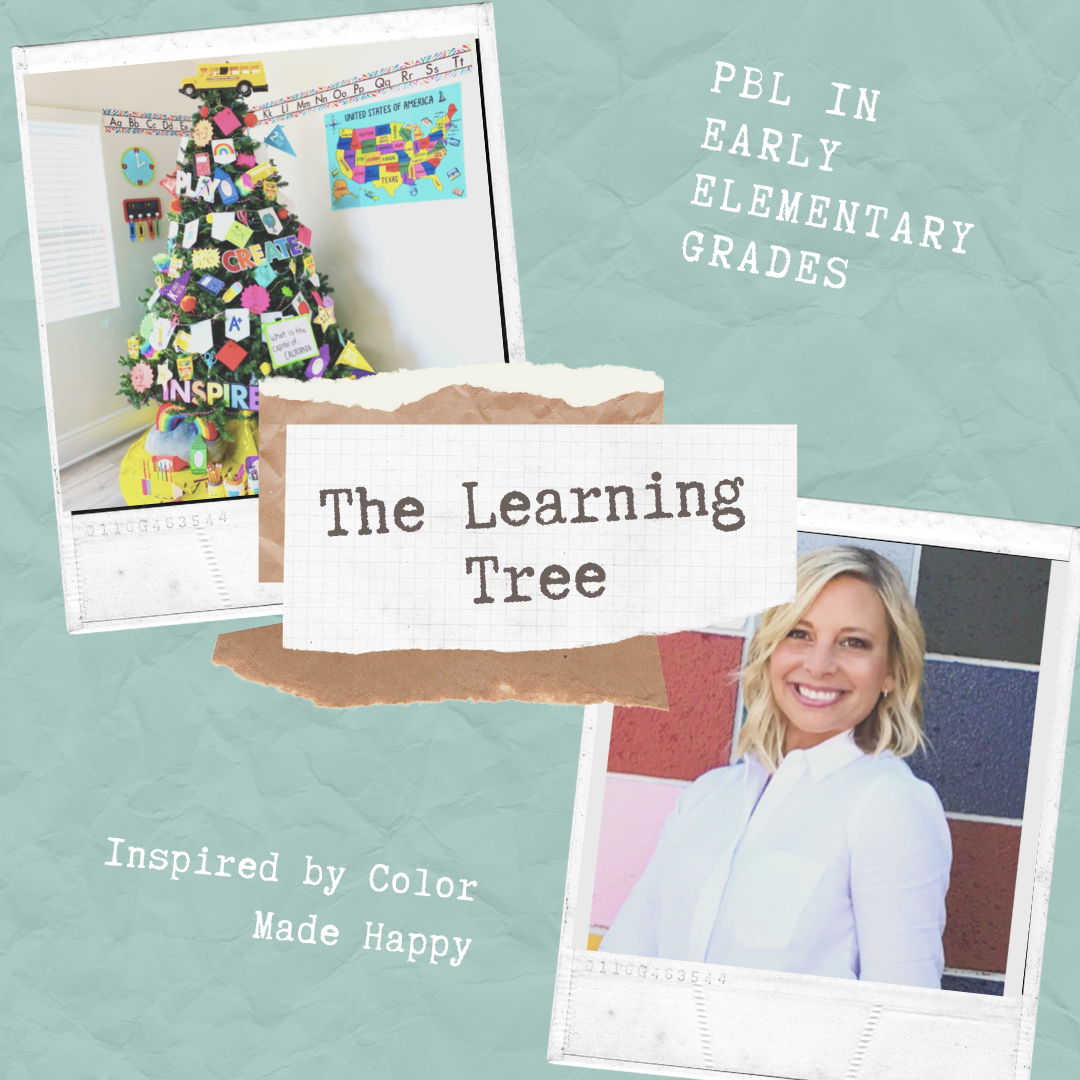The Learning Tree for PBL in elementary grades
I saw this adorable idea for a classroom or homeschool set-up called a Learning School Christmas Tree by Color Made Happy, and couldn’t help but think about the potential for PBL in early elementary. Here are 3 ideas for using this concept as a simple “learning tree for PBL” in elementary grades.
To Spark Student Inquiry
“Invitations” are a thing for early childhood development and preschool teachers, but they can also be a thing for early elementary teachers. {To learn more about engaging invitations check out this book} Putting project items out on the tree for students to interact with and explore can be a great way to get young students excited about the learning ahead and also beginning to think about what they may be learning about. Teachers can do this daily as students arrive in the classroom or as an optional station, or as a part of the project launch experience {to learn more about the project launch click here}. Some ideas for invitations can include any of the following that might be related to the project content:
- small models
- mini books
- tactiles
- tinkering items
To Elicit Need to Knows
Curiosity is a gimme for 5-7 year olds, I mean they have questions for EVERYTHING! But guided questions related to a project can be tough to pull out of them. The Know and Need to Know process is a best practice of PBL, but what does that even look like in the early elementary PBL set-up? You can load a learning tree up with pictures, graphics and single words related to the project content, product or process to elicit Need to Knows that you can them document to guide instruction. For example, if you are doing a project on community you might include the following on your tree:
- The word community and other content vocabulary
- Pictures of different types and sizes of communities
- People from your community
- Guest speakers for the project
- Historic communities and current communities
Students can pull items off the tree and the teacher can follow up with questions or even Visible Thinking Routines to help students arrive at how it might be related to the project and what they might need to know about it to move forward in the project. The teacher can document student discussion points on the K/NTK chart.
To Capture the Learning process
Sometimes it’s hard to capture all the learning that happens in a project… all the hard work and growth… and before you know it you have moved on! The learning tree can be a fun way to document the project process. At each phase of the project the class can decide what should go on the tree to help you celebrate and remember what was completed during that project milestone. This can also be a great “pause point” to prompt student reflection (either individually or as a group). Some ideas for project artifacts could include:
- Photographs of guest speakers or students working on the project
- Student work- final products or drafts to show growth!
- Teacher-created models
- Artifacts from field work
- Invitations to an exhibition
Adapting to Virtual Learning
Are you stuck in virtual learning land?! Make it an early Christmas season and get a faux tree for your home office to have behind your laptop camera. You can use student input to create the tree at home and have as an engaging backdrop for your daily lessons. Or maybe you cut out a tree for students to have up on their wall at home and you provide items for them at a weekly pick-up at school to add to the tree. Perhaps the learning tree is just what you and your students need to add a little bit of festivity and fun to the screen grind!
More Virtual Learning Resources
- Other blogs on virtual learning
- About PBL for virtual learning
- Curation of resources for virtual learning
- E-courses and workbook on PBL (including access to the NEW! virtual learning and PBL e-book!)
- Why PBL Can’t Wait, Getting Smart
- 5 Tips for Designing Asynchronous Learning, Corwin Press
- 3 Practices to teach 21st Century Skills in a Virtual Classroom, Teaching Channel
- Tech Tools to Take PBL Online, Corwin Press

